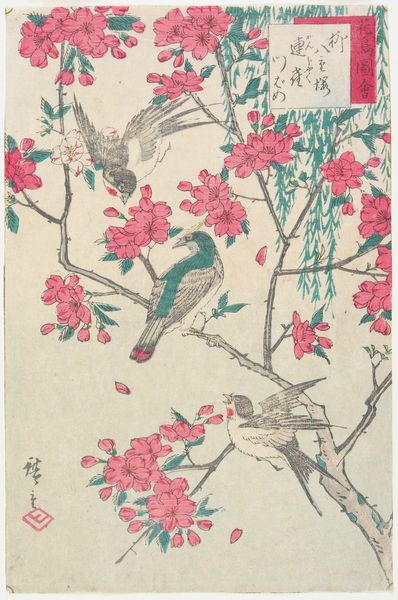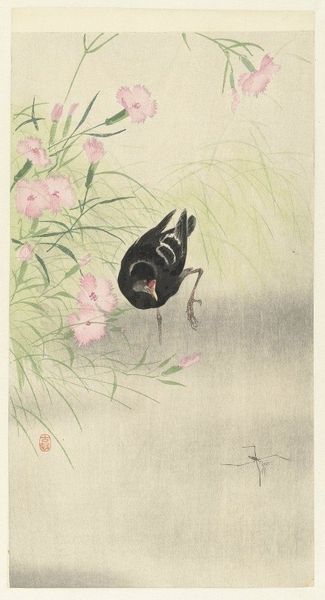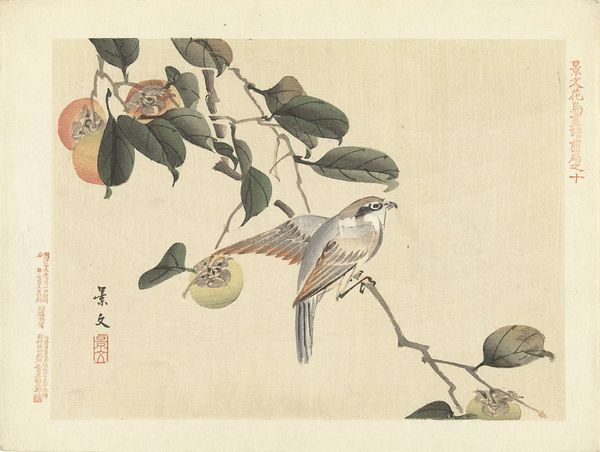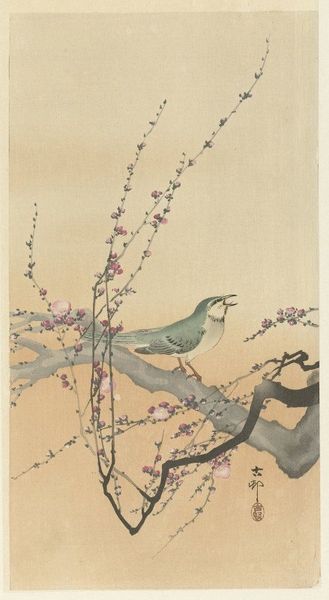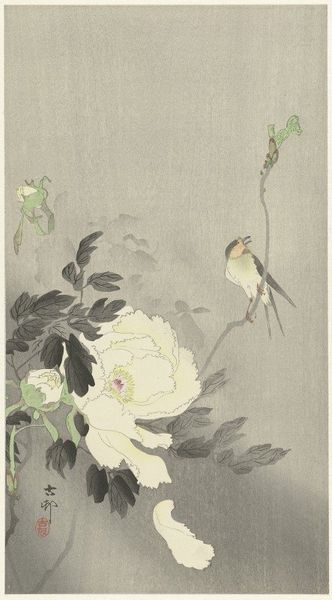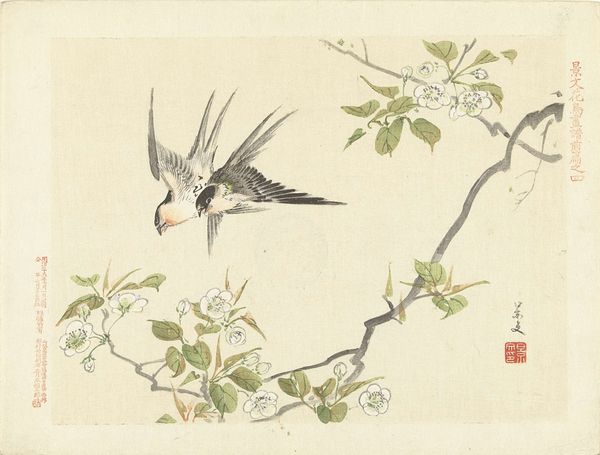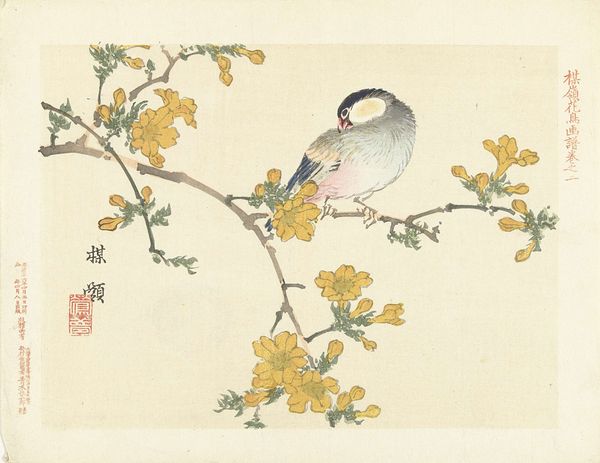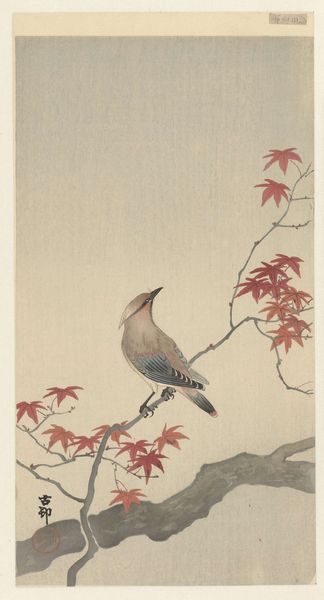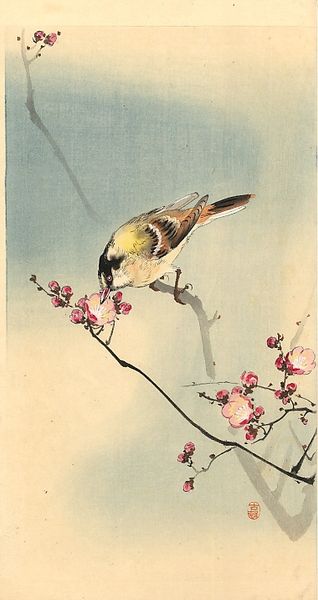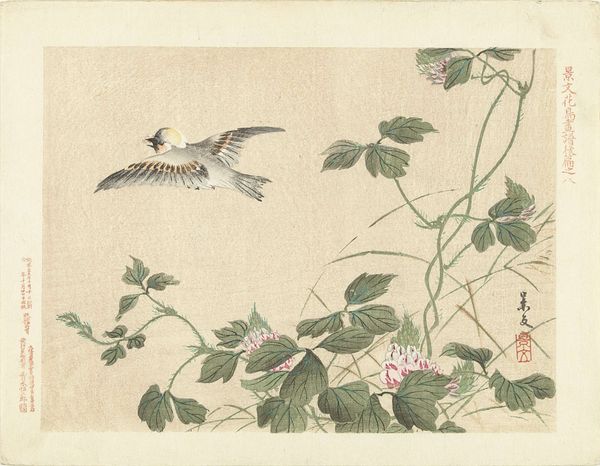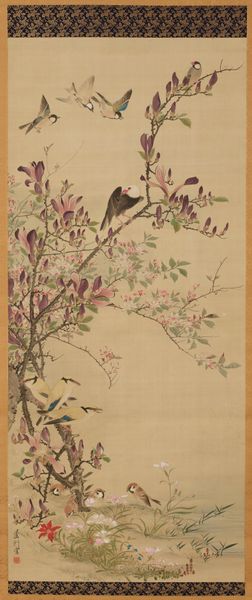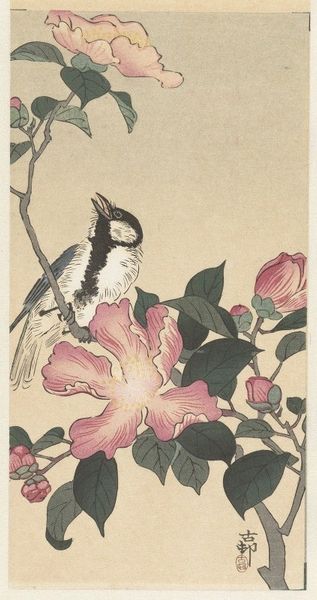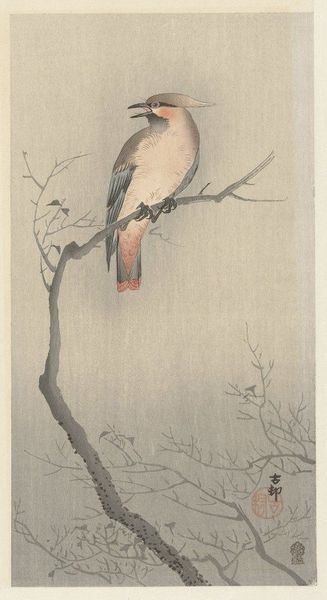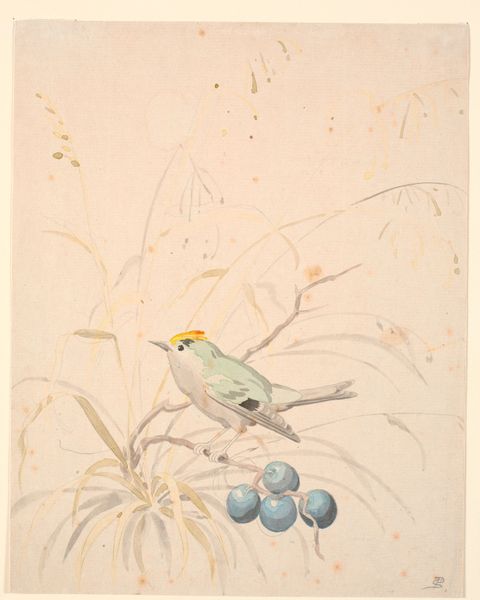
Dimensions: height 343 mm, width 186 mm
Copyright: Rijks Museum: Open Domain
Curator: Looking at this print, immediately I’m struck by a feeling of serene observation. A sense of delicate balance in this composition. Editor: Yes, the sense of calm is almost palpable. Here we have “Gors op bloesemtak”, which translates to “Bunting on a blossoming branch”, attributed to Ohara Koson, likely created sometime between 1900 and 1930. It is a watercolor print currently held at the Rijksmuseum. I’m quite fascinated by the way it’s printed, the graininess that's become integral to its aesthetic quality. Curator: Note how Koson uses the bird perched precariously to symbolize both vulnerability and resilience. It's a common visual trope within Ukiyo-e to evoke ephemeral beauty. This single bird also represents larger existential themes. Editor: I'm curious about the paper used. The way the pigment has bled in places hints at a handmade quality, probably with noticeable fiber content. The entire visual weight relies upon a fairly inexpensive and disposable material. I also see the subtle texture indicating this may have been printed from woodblocks. Do we know anything about the printing process? Was Koson involved directly or was this the work of artisans? Curator: Japonisme embraced a distinct visual language. You can see it reflected here: A compressed perspective places symbolic emphasis on nature, capturing moments rather than epic narratives. Consider that signature. I believe it functions as not just a signature, but almost as an ideological marker, as the print adopts Japonisme within a distinctly European context. Editor: And a fairly cheap one! The appeal and success of Japonisme also comes from the use of readily available materials— pigments and paper that facilitated quick production and distribution to a new market in Europe. Did that change art consumption as a whole? Curator: Absolutely, art suddenly became part of a wider decorative scheme—affecting home decor choices for an emerging middle class, altering perceptions around display, and affecting the way people relate to their immediate surroundings. Editor: This print invites a moment of pause, making you reflect on materiality and its contribution to global trends. It bridges production and consumption. Curator: It makes us meditate upon time and being through deceptively simple natural symbols.
Comments
No comments
Be the first to comment and join the conversation on the ultimate creative platform.
